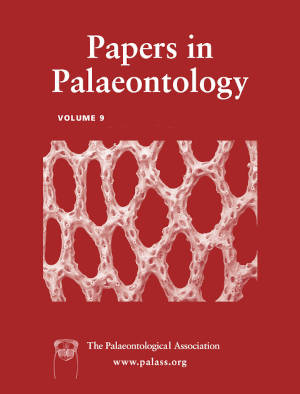Article: Elucidating the morphology and ecology of Eoandromeda octobrachiata from the Ediacaran of South Australia
Publication: Papers in Palaeontology
Volume:
9
Part:
6
Publication Date:
2023
Article number:
e1530
Author(s):
Tory L. Botha, Emma Sherratt, Mary L. Droser, Jim G. Gehling, and Diego C. García-Bellido
DOI:
10.1002/spp2.1530
Abstract
Abstract Eoandromeda octobrachiata is a poorly understood Ediacaran organism, with spiral octoradial arms, found in South Australia and South China. The informal Nilpena member of the Rawnsley Quartzite, Flinders Ranges in South Australia preserves more than 200 specimens of Eoandromeda. Here we use the novel application of rotational geometric morphometrics together with palaeoenvironmental information to provide a better insight into their palaeobiology and ecology, and to address conflicting hypotheses regarding mode of life and taxonomic affinity. We find that Eoandromeda probably had a radially symmetrical shape in life, was cone shaped and had a high relief off the microbial mat. Analysis of the symmetric and asymmetric shape components showed that they deform strongly in the direction of palaeocurrent, therefore they are thought to be made of a flexible material. Almost all specimens are compressed flat. Specimens that appear to have not fully collapsed support the idea that Eoandromeda was probably cone shaped and suggest that they possibly collapsed spirally. Our shape analysis, along with observed morphological features, support a benthic rather than pelagic mode of life. Morphological and ecological inconsistencies do not fully support the hypothesis of a Ctenophora taxonomic affinity.
